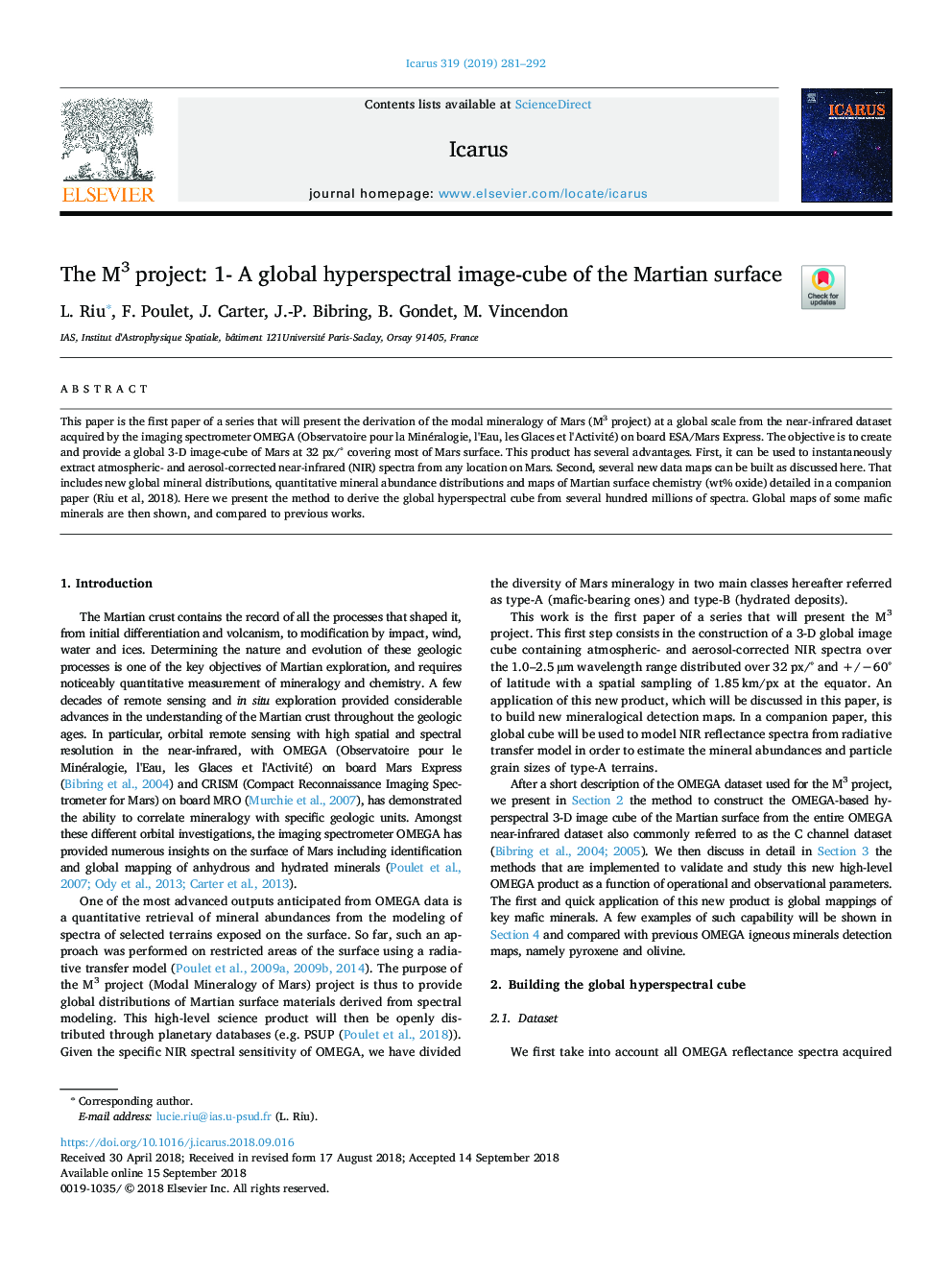| Article ID | Journal | Published Year | Pages | File Type |
|---|---|---|---|---|
| 11026363 | Icarus | 2019 | 12 Pages |
Abstract
This paper is the first paper of a series that will present the derivation of the modal mineralogy of Mars (M3 project) at a global scale from the near-infrared dataset acquired by the imaging spectrometer OMEGA (Observatoire pour la Minéralogie, l'Eau, les Glaces et l'Activité) on board ESA/Mars Express. The objective is to create and provide a global 3-D image-cube of Mars at 32 px/° covering most of Mars surface. This product has several advantages. First, it can be used to instantaneously extract atmospheric- and aerosol-corrected near-infrared (NIR) spectra from any location on Mars. Second, several new data maps can be built as discussed here. That includes new global mineral distributions, quantitative mineral abundance distributions and maps of Martian surface chemistry (wt% oxide) detailed in a companion paper (Riu et al, 2018). Here we present the method to derive the global hyperspectral cube from several hundred millions of spectra. Global maps of some mafic minerals are then shown, and compared to previous works.
Related Topics
Physical Sciences and Engineering
Earth and Planetary Sciences
Space and Planetary Science
Authors
L. Riu, F. Poulet, J. Carter, J.-P. Bibring, B. Gondet, M. Vincendon,
